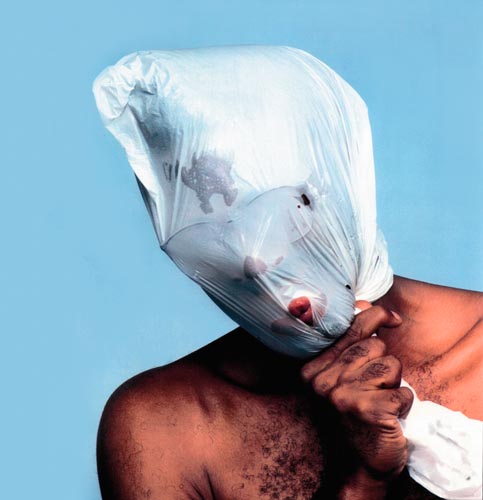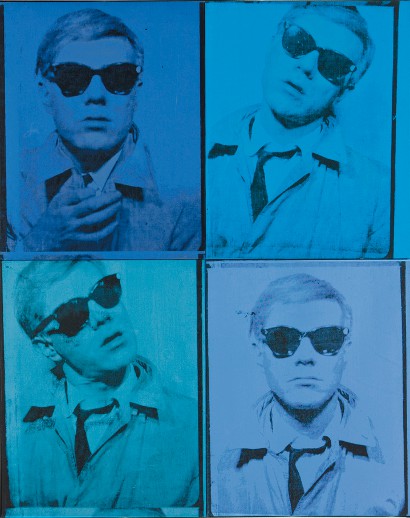
Overconsumption, Contemporary Art’s Perspective
In 2005 when Angelina Jolie and Brad Pitt’s “air” reportedly sold on Ebay for $529.99, I was shocked. The latest genius of senselessness, of course, is the doomsday prophet Harold Camping. Camping botched his first apocalyptic prediction, confusing the months of May and October. Oops! He meant to say that the end of the world would occur on October 21, 2011, not May 21, 2011—minor oversight, considering the number of Christians waiting with bated breath. Surely, Jolie and Pitt will wind up in flames when the world comes to an end. Truthfully, I will, too.
Our culture certainly doesn’t suffer from any lack of apocryphal projections, grandiose celebrity-ism, or outrageous, hoggish consumerism. In short, our society suffers no deficit of absurdity. And, I can’t resist imagining those Christians being beamed-up in some sort of aircraft, which smacks of science fiction.
My disbelief, of course, doesn’t preclude any of these phenomena from happening, however. And, the “art world”, as reflective of our culture, has no qualms delving into the absurd, either.

Andy Warhol, Self-Portrait, 1963-4
Take, for instance, the Warhol estate. (Don’t read the following statements as a formal critique of Warhol’s art, because they are not.) More accurately, the following comments are about the preposterousness of the art market in terms of revealing the extreme prices that a “free market” will bear, given the subjective valuation of an object. It is ridiculous, almost unfathomable, that one painting is worth $38.4m. And, Warhol’s four-paneled, self-portrait recently sold for that very amount, $38.4m, at auction a few weeks ago, reported The Economist. The art market is the only market, which could actually sustain the sale of a proverbial polished turd—seriously. Seems shocking, but it’s true.
Let’s move on to rotting hot dogs. Artist William Pope.L sold an ephemeral hog dog installation—yes, hot dogs decompose—, Map of the World (2002). The hog dogs mapped the world in reverse, and were stapled to the wall. Here again, the art market excels in calling attention to free-market ridiculousness. Thanks, William!
Just when you think that capitalism could not possibly bear the sale (trade) of something so outrageous, it does, which makes it easy to see that our economy is far less concerned with quality, than it is control. Think: Koons in Versailles, or Dadaism, or even, sharks in formaldehyde solution. So many artists excavate this issue, commenting on consumerism, and pointing out the extent to which our market is absurd. In this sense, a few artists have certainly reached celebrity status. The question is: which of those artists will be next in line, selling their “air” on Ebay? These artists could outsell Joile, no doubt, getting higher bids than $529.99. Sorry, Angelina!

JEFF KOONS, Lobster, 2003, Polychromed aluminum, steel and vinyl, 97 x 18-7/8 x 37 inches (246.4 x 48.3 x 94 cm)
Many artists link the absurdity of consumption to food, naturally. Young, LA-based artist Pearl Hsiung, like Pope.L, employs food as a muse. Hsiung’s Screaming 4 Vengeance, a digital video, features a girl walking down the street eating a banana when she steps in a pile of crap—unappetizing, yes, however revealing. The distance between ingesting and disgorging is as short as one’s digestive tract.
Or, in the instance of Clayton Porter’s art: picture a fleshy-colored sex toy with two orifices (mouths) on a video screen. Then, imagine, various ice cream toppings, and other sweets being shoved into those orifices at both ends by hands wearing surgical gloves. The sounds accompanying each insertion are the beeps of a grocery store checkout machine, and moans of sexual ecstasy.
Hsiung and Porter are looking at the fundamentals of life—food and sex, which are essential to our survival. Moreover, our orifices function as thresholds to engage with both food and sex. They are sources of pleasure; we use them to feed ourselves, and to couple with a partner. However, the breadth of human experience is bought and sold. Food costs money. Sex is bought and sold, too. Are you hearing the checkout counter beeps, yet? Beep. Beep.

Clayton Porter, Mouths Have No Gender, Video, Duration: 15 minutes, 2004
I, as a human being (obviously), could be commodified to the point of implanting a microchip with my bank account number into my arm. I am as good as my credit score, really, if everything I do can be boiled down to an exchange of money—right? Wow! I can hear the hippies clamoring—”free love”. Sigh.
Think about it, what didn’t you buy, or sell, today? Or, more specifically, what did you use that hadn’t at one point been bought or sold in some capacity? The list narrows.
Carving out a space for meaningful human connections must be a priority over money. Where are all the humanitarians? Further, at the very least, when you look out onto the world, and you are faced with 21st-century overwhelm—laugh. Just laugh. Artists—like Pope.L, Koons, Hsiung, and Porter serve as constant reminders that laughter is necessary considering the big joke of money. Moreover, they are turning the joke around, and biting back, asserting freedom within the system. Therefore, the state of our nation might be absurd, farflung, globalized, and beyond qualification. However, in equal measure, it would be a great moment, indeed, for all 6.9 billion of us to be laughing in simultaneity.
Feature Image: William Pope.L, Foraging (asphyxia version), 2008, Digital C-print
